EMPLOYMENT IN THE MARKET ECONOMY IN ... - Eurostat - Europa
EMPLOYMENT IN THE MARKET ECONOMY IN ... - Eurostat - Europa
EMPLOYMENT IN THE MARKET ECONOMY IN ... - Eurostat - Europa
You also want an ePaper? Increase the reach of your titles
YUMPU automatically turns print PDFs into web optimized ePapers that Google loves.
Chapter 4 — Employment and wages in industry by region<br />
The SBS regional data<br />
The SBS regional data cover a limited number of variables<br />
(at present, the number employed, local units, wages and<br />
salaries and gross investment), disaggregated at a NACE<br />
2-digit level, for NUTS 2-level regions across the EU. Unlike<br />
the data analysed in previous chapters, these variables are<br />
classified to NACE sectors of activity according to the main<br />
activity of local units (ie enterprises or parts of enterprises<br />
— eg workshops, factories, warehouses, offices and so on<br />
— situated in a geographically identified place). This<br />
should give a more accurate representation of the actual<br />
regional distribution of employment and the other variables<br />
than if the basis of classification of activities were the enterprise<br />
as in previous chapters.<br />
The regional basis of classification of these data is the standard<br />
NUTS — ie the nomenclature of territorial units for statistics<br />
— system used by <strong>Eurostat</strong>. This, so far as possible,<br />
divides countries into administrative areas which are similar<br />
in terms of population. In practice, there are large differences<br />
in both the population size of regions and their land<br />
area. Overall, there are some 206 NUTS 2-level regions in<br />
the EU15 and a further 41 in the 10 new Member States.<br />
Bulgaria and Romania are divided into 6 regions and 8 respectively.<br />
The data used in the analysis relate mainly to 2001 but to<br />
2000 where data for the later year are not yet available. This<br />
applies to Belgium, Denmark, Greece, France, Ireland, Finland<br />
and the UK. This does not affect the results presented<br />
here significantly. In some countries where regional data<br />
are not available, specifically Denmark and Slovenia, national<br />
data have been used instead. (For Slovenia, data are<br />
for employees rather than the total employed.) As a result,<br />
data are enterprise-based, as in previous chapters, rather<br />
than based on the main activity of local units as for other<br />
countries. In Portugal and Finland, where the NUTS classification<br />
have recently changed and where because of this<br />
no SBS data are as yet available for the regions affected,<br />
the data shown for employment are based on LFS regional<br />
data which have been aligned with the SBS national figures.<br />
This is also the case for the Czech Republic, where<br />
there are no SBS regional data.<br />
In addition, there are a number of regions where data are<br />
missing for the industries selected for analysis here, mainly<br />
for confidentiality reasons, and where estimates based on<br />
available data are presented instead in order to have a<br />
complete a map as possible. Estimates in these cases are<br />
derived from NUTS 1 level data for the industry in question<br />
or from the data for 2000 or 1999. These estimates ought<br />
not to be a major source of error given the relatively wide<br />
sectors into which the data are divided.<br />
No such estimates have been made for average wages<br />
since there is no readily available alternative data source to<br />
use.<br />
Germany, Luxembourg, Champagne-Ardenne in France,<br />
Norra Mellansverige in Sweden, Pohjois-Suomi in Finland,<br />
Asturias and Pais Vasco in Spain, Sterea Ellada in Greece<br />
and West Midlands in the UK.<br />
Machinery and equipment<br />
There are some three times the numbers employed in machinery<br />
and equipment (NACE sector 29), ie mechanical<br />
engineering, in the enlarged EU than in basic metals. Employment<br />
is also more dispersed across the EU. It is particularly<br />
high in most parts of the Czech Republic (over<br />
2% of working-age population) as well as in Severen<br />
Tsentralen and Yuzhen Tsentralen in Bulgaria and Centru<br />
in Romania (where it also accounts for over 2% of working-age<br />
population). It is even higher in<br />
Baden-Württemberg, Unterfranken and Schwaben in<br />
Germany (4% or more of working-age population). Employment<br />
in the sector is equally important in<br />
Emilia-Romagna in Italy and only slightly less so in<br />
Piemonte, Veneto, Lombardia and Marche. Elsewhere,<br />
there are relatively large numbers employed (over 2% of<br />
working-age population) in Småland med Öarna (almost<br />
4% of working-age population) and Norra Mellansverige<br />
in Sweden, Etelä-Suomi in Finland, Pais Vasco in Spain<br />
and the West Midlands in the UK.<br />
Electrical machinery and equipment<br />
Electrical machinery and equipment (NACE sector 31), ie<br />
electrical engineering, has a similar regional distribution<br />
across the enlarged EU as machinery and equipment. However<br />
it employed around half the number of people in the Union<br />
as mechanical engineering in 2001. Again, employment is<br />
high in many Czech regions (close to 3% of working-age<br />
population in Jihozápad and Severovýchod, in the<br />
south-west and north, respectively), in Közép-Dunántúl and<br />
Nyugat-Dunántúl in the west of Hungary (2% of working-age<br />
59



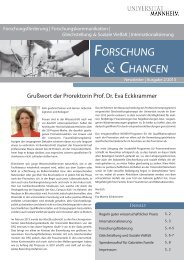
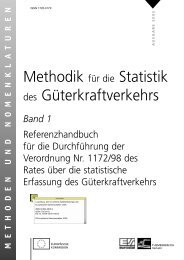
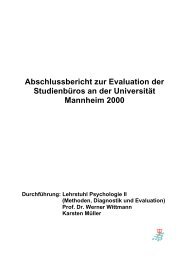
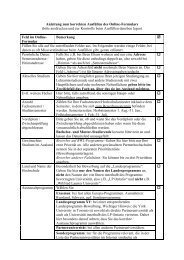
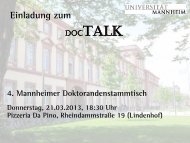

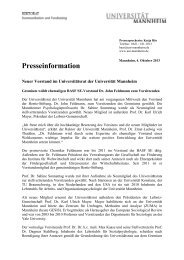


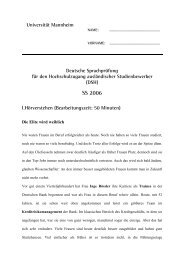
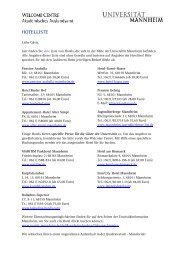
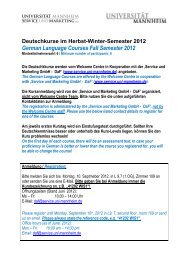
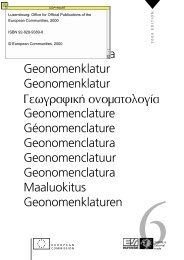
![226. [Augsburg], 27. Oktober 1562 An Joachim Camerarius d. Ã ...](https://img.yumpu.com/27559109/1/184x260/226-augsburg-27-oktober-1562-an-joachim-camerarius-d-a-.jpg?quality=85)